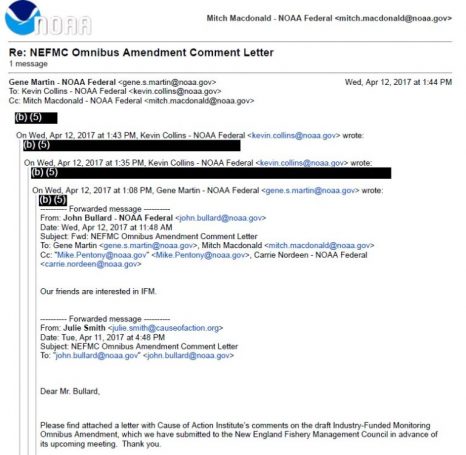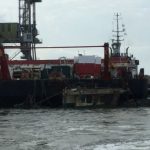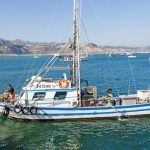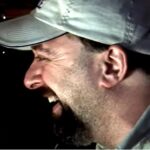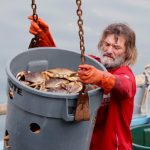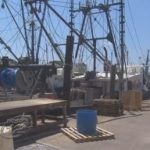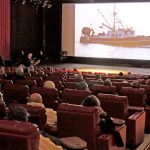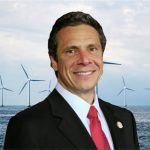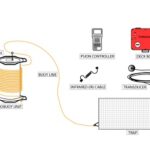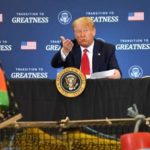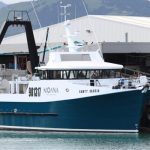Search Results for: Orin C
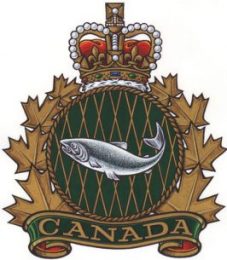
Controversial bycatch monitoring program coming to Maritime lobster industry
Canada’s Department of Fisheries and Oceans is rolling out a controversial bycatch monitoring program in three lobster fishing areas in Nova Scotia, but it won’t say when the program will be introduced across the Maritimes. The department is imposing at-sea monitors for the first time this fall in three lobster fishing districts in Nova Scotia from Halifax to Digby. The department said it needs to collect data on other species — such as cod, cusk and Jonah crab — that are inadvertently being caught in lobster traps, which is known as bycatch. The question is when the monitoring will roll out elsewhere. >click to read<11:14

By-catch monitoring coming to inshore lobster fishery (some fishermen are pissed!)
For the first time, inshore lobster fishermen in southwest Nova Scotia will have someone looking over their shoulders when they head out to sea later this fall. It’s a change many are unhappy about, causing fishermen to snub their own associations — some of which have banded together to create a monitoring program. “We didn’t want this. None of the associations wanted this, but we have tried to make it better,” said Heather Mulock of the Coldwater Lobster Association on Wednesday. The federal Fisheries Department wants to gauge how many species, particularly cod and cusk, are being inadvertently caught in lobster pots. >click to read<21:34

Dear Senator Warren, I will be exploring my options
Dear Senator Warren, I am a lifelong Democrat, have been Party Chairman in Gloucester, Ma., and have supported you in the past. I find myself very disappointed, Senator, as I continue my quest of supporting the remaining fishermen of Gloucester, the Gloucester Fishermens Wives Association, Captain Sam Novello, Mayor Sefatia Romeo Theken, and others in the industry. In the last three months, I have sent numerous emails, called your Washington office, your Boston office, and left messages for you, and no one has bothered to call, or answer back! I have become discouraged that I can’t count on you, so what am I supposed to do? >click to read< by Sam Parisi 23:43
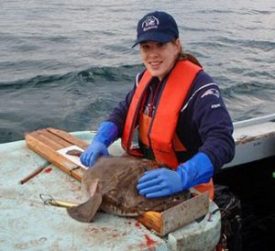
NOAA/NMFS to Reimburse Sector At-Sea Monitoring Costs
NOAA/NMFS will pay for all at-sea monitoring costs for fishing year 2018. Any groundfish sector trip beginning on or after May 1, 2018 that was selected for at-sea monitoring coverage is eligible for reimbursement. NOAA will also reimburse industry for an additional 25 percent of their at-sea monitoring costs in fishing year 2017 using remaining prior year funds, bringing the total reimbursement for 2017 to approximately 85 percent. This reimbursement was provided for by Congress through an FY18 funding increase for groundfish at-sea monitoring. >click to read<12:54
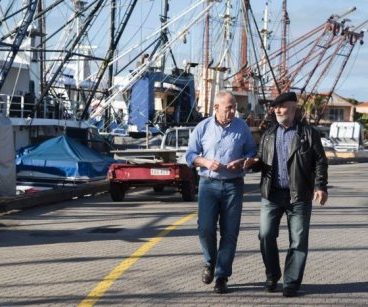
Oil drilling bid for Great Australian Bight not a boring debate for Port Lincoln locals
Plans to drill for oil in the Great Australian Bight off the coast of South Australia have sparked a lively debate in the seaside town of Port Lincoln. In a city that calls itself the seafood capital of Australia, the discussion centres on the future of its greatest asset — The Great Australian Bight. Norwegian oil company, Equinor, plans to drill for oil in the seas that support Port Lincoln’s most important industry.,, Norwegian Fisherman’s Association representative, Bjornar Nicolaisen, also addressed the meeting, on behalf of an ongoing campaign in Norway to protect fisheries from drilling. Overwhelmingly speakers spoke against Equinor’s plans — just three people on the evening put forward cases for the plans. >click to read<09:57
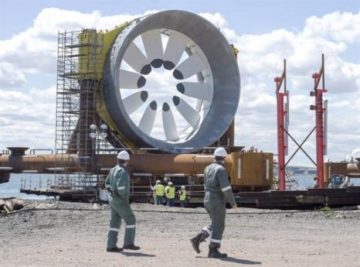
Ownerless Bay of Fundy turbine operating without fish kill monitoring gear
Even before Cape Sharp Tidal, owned by Irish company OpenHydro and Emera, placed it on the floor of the Minas Passage two weeks ago and OpenHydro was placed in receivership days later, the 10-billion tonnes of seawater hauled into the narrowing between Cape Split and Cape Chignecto was already tainted by bad blood. “The opposition isn’t about just whether it kills fish because other things kill fish too — fishermen kill fish,” said Mary McPhee, former facilities operator for the Fundy Ocean Research Centre for Energy, the government-funded tidal test site commonly known as FORCE. “What fishermen want is for the tidal power people to be treated in the same manner as they are. They want the law to be applied equally. So if a fishery has a quota, why can’t tidal power have a quota?” >click to read<08:47

Fishermen hope for long-term solution to At-Sea Monitoring costs
The federal budget bill approved last month includes millions of dollars to pay for workers who are required to join fishing trips off New England’s shores. But it’s a temporary fix. And for the few groundfishermen left, the cost could be too much to take on themselves. David Goethel has been groundfishing off Hampton’s coast for 51 years and says a lot has changed. “We’ve lost in New Hampshire about 95 percent of our active fishermen in the last 17 years,”,, >click to read<11:24

SIMP: Federal monitoring program will track foreign imports
A decision by Congress to add imported shrimp to the Seafood Import Monitoring Program is good news for an industry not used to hearing good news. The Gulf shrimp industry has struggled against a rising tide of cheap foreign imports for years, making it tough for domestic shrimp boat operators to make a living. Combined with the factors, this situation has led to a dramatic decline in the size of the Brownsville-Port Isabel shrimp fleet.,, The purpose is to thwart illegal, unreported and unregulated fishing activity. >click to read<10:38
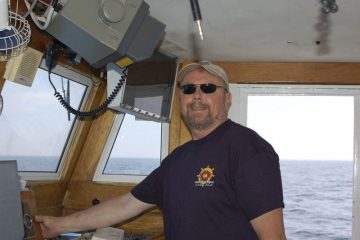
NOAA/NMFS to foot at-sea monitoring costs – Thank You Senator Shaheen!
Timing may not be everything but it sure counts for a lot. Just ask New Hampshire groundfisherman David Goethel. Goethel, who had persevered through cascading years of escalating regulation, slashed fishing quotas, a failed lawsuit and, more recently, the prospect of paying the full cost of at-sea monitoring, was ready to get out of commercial groundfishing. “I had planned to sell my boat this summer,” Goethel said Wednesday, referring to his 44-foot, Hampton, New Hampshire-ported Ellen Diane. “I was done.” Last week, following a full year of working behind the scenes with U.S. Sen. Jeanne Shaheen of New Hampshire, Goethel got the news he and other groundfishermen wanted to hear: >click to read<08:24

Fisherman who sued feds thrilled about funding for at-sea monitoring
A commercial fisherman who sued the federal government over at-sea monitoring costs was thrilled Thursday when it was announced the National Oceanic and Atmospheric Administration would fully fund the program under the omnibus government spending bill. David Goethel, of Hampton, said he learned about the funding Wednesday. “I’ve been sitting on this for 18 hours. I was like a cat that swallowed a canary. I didn’t want to spit out any feathers,” Goethel said Thursday afternoon. >click to read<09:01

Shaheen Negotiates Full Federal Funding for At-Sea Monitoring Fees in Government Spending Bill
U.S. Senator Jeanne Shaheen (D-NH), the lead Democrat on the Commerce, Justice, Science and Related Agencies Senate Appropriations Subcommittee, released the following statement after obtaining funding in the omnibus government spending bill that will prevent a burdensome and costly at-sea monitoring fee from being imposed on New Hampshire fishermen this year. The fee was previously paid for by the National Oceanic and Atmospheric Administration (NOAA), but in recent years, the agency has shifted this significant financial burden on to fishermen. >click to read<11:00

EDF tells NOAA Get multiple buyers for Carlos Rafaels assets, more monitoring
Jim Kendall chuckled as he attempted to grasp the words to describe a letter crafted by Environmental Defense Fund, which it sent to NOAA.,,, The letter pitches two strategies to NOAA in handling the permits and punishment linked to Rafael,,, EDF suggests that NOAA should require multiple buyers of Rafael’s assets and require monitoring of his vessels while also establishing funding for the monitoring. >click to read< 18:41
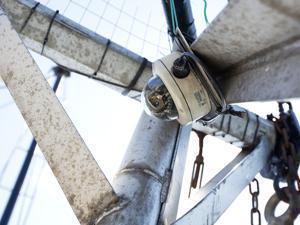
Education key to electronic reporting, monitoring systems
In a perfect world, Steve Kennelly sees the New England Fishery transitioning to electronic reporting within the next year. “There’s no reason why that group can’t be formed pretty soon,” the director of IC Independent Consulting said. The next step would be implementing electronic monitoring within 3 to 4 years. “It’s silly to talk anywhere beyond five years out” because of how fast technology continues to evolve, Kennelly said. The New England Fishery Management Council, which concluded two days of meetings on Wednesday in Portsmouth, New Hampshire, resides in an imperfect world, though. >click here to read< 18:34 
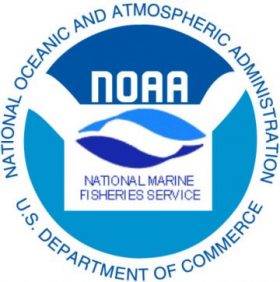
NOAA Announces At-Sea Monitoring 2018 Coverage Levels for Groundfish Sector Fishery
NOAA Fisheries announces that for fishing year 2018 the total target at-sea monitoring coverage level is 15 percent of all groundfish sector trips. This target coverage level is a one percentage point decrease from the 2016 coverage level, which was 16 percent. As the target coverage level is set based on an average of at-sea monitoring data from the past three full groundfish fishing years, this level is set based on data from the 2014-2016 fishing years. >click here to read< 14:45
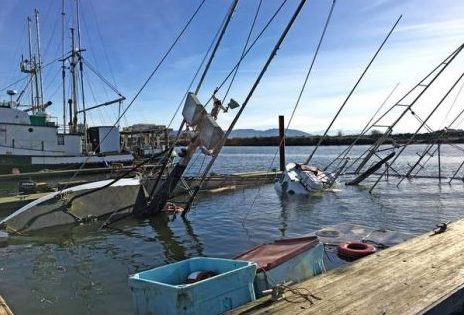
Tuna troller sinks in Ilwaco mooring basin
Authorities on Monday continued dealing with pollution concerns and making plans to raise the Lihue II, a 61-foot wooden fishing vessel that sank at her mooring at the Port of Ilwaco sometime Friday night or Saturday morning. A citizen reported the sinking to Long Beach Police at 10:14 a.m. Saturday. “Reporting party stated there was a boat that sunk; reporting party does not know if it was sabotage or what,” according to the Pacific County Dispatch media report. click here to read the story 10:28
Labour to pause rollout of fish monitoring system
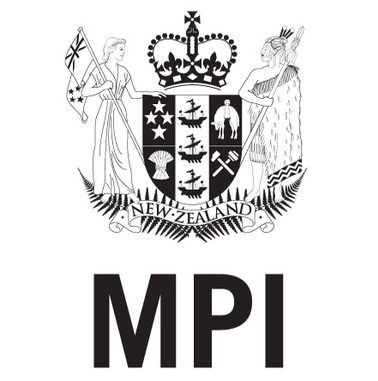 The fishing industry has got the pause it wanted to a system of electronic monitoring and reporting of fishing catches. Fisheries Minister Stuart Nash has instructed Ministry for Primary Industries officials to look at options for slowing down the implementation of IEMRS (Integrated Electronic Monitoring and Reporting System) on commercial fishing vessels.,, All commercial fishers were going to be required to use Geospatial Position Reporting and e-logbooks by April 1, 2018, and cameras by October 1, 2018. click here to read the story 09:01
The fishing industry has got the pause it wanted to a system of electronic monitoring and reporting of fishing catches. Fisheries Minister Stuart Nash has instructed Ministry for Primary Industries officials to look at options for slowing down the implementation of IEMRS (Integrated Electronic Monitoring and Reporting System) on commercial fishing vessels.,, All commercial fishers were going to be required to use Geospatial Position Reporting and e-logbooks by April 1, 2018, and cameras by October 1, 2018. click here to read the story 09:01
Governor Baker: Codfather windfall should fund electronic monitoring
 Baker, in a letter to federal fishing regulators late last month, sided with a dozen state lawmakers and local officials who are urging the proceeds from the forfeiture of Rafael’s fishing fleet and any financial penalties tied to his case to be used to pay for electronic catch monitoring. The money to pay for monitoring would relieve a major financial pressure on the state’s fishermen who have to pay for at-sea monitors who ensure compliance with catch-quotas designed to protect the health of groundfish stock. click here to read the story 18:25
Baker, in a letter to federal fishing regulators late last month, sided with a dozen state lawmakers and local officials who are urging the proceeds from the forfeiture of Rafael’s fishing fleet and any financial penalties tied to his case to be used to pay for electronic catch monitoring. The money to pay for monitoring would relieve a major financial pressure on the state’s fishermen who have to pay for at-sea monitors who ensure compliance with catch-quotas designed to protect the health of groundfish stock. click here to read the story 18:25
Judge orders DFO monitoring reports of rival fishing vessels to be disclosed to the court
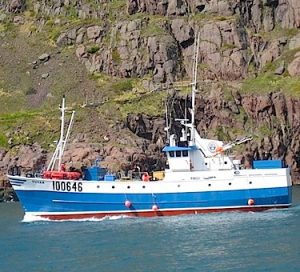 The Nunavut fishing company Masiliit Corp. has won a small victory in trying to prove it was following industry standards when fishing for turbot in Davis Strait in October 2012. Masiliit Corp., a member of the Arctic Fishery Alliance, and its ship master, Captain George Hudson, have been charged under the Fisheries Act for fishing outside of Canadian waters. But in what has become a long and drawn out legal affair, their lawyers have argued that because of Davis Strait’s “narrow fishing channel, unpredictable and strong currents and an irregular international fishing boundary,” it is not unusual, “for fishing nets to drift after they have been set,” Nunavut Justice Sue Cooper summarized in her written judgement. click here to read the story 09:59
The Nunavut fishing company Masiliit Corp. has won a small victory in trying to prove it was following industry standards when fishing for turbot in Davis Strait in October 2012. Masiliit Corp., a member of the Arctic Fishery Alliance, and its ship master, Captain George Hudson, have been charged under the Fisheries Act for fishing outside of Canadian waters. But in what has become a long and drawn out legal affair, their lawyers have argued that because of Davis Strait’s “narrow fishing channel, unpredictable and strong currents and an irregular international fishing boundary,” it is not unusual, “for fishing nets to drift after they have been set,” Nunavut Justice Sue Cooper summarized in her written judgement. click here to read the story 09:59

Vessel monitoring technology partnership makes tracking more accurate
Accurate vessel monitoring is now easier with a technology offering that combines monitoring with a transponder. exactEarth’s exactTrax small vessel monitoring technology is now incorporated into the VMS Track-Pro, the newest Class B AIS transponder from Weatherdock. Purpose-built VMS Track-Pro is thought to be the world’s first single-bracket, battery powered and purpose-built AIS-based tracking solution. It is designed to be a secure, easy-to-use, and cost-effective solution for tracking fishing vessels and other small crafts. VMS Track-Pro was developed with extensive input and feedback from fishermen, as well as detailed analysis of homeland security requirements. click here to read the story 17:56
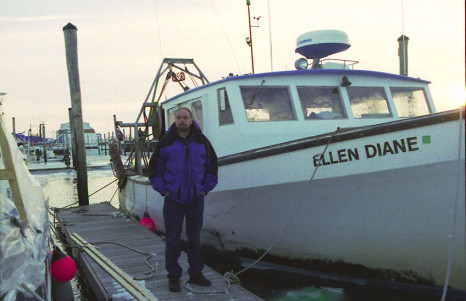
Your View: Even ‘smart’ video monitoring is onerous to fishermen
I would like to make several observations regarding Michael Bonner’s Aug. 21 article, “Delegation supports Rafael’s forfeiture toward electronic monitoring.” First of all, state legislators’ support for utilizing the forfeiture to fund the electronic monitoring (surveillance), presupposes that this form of electronic monitoring will be supported and adopted. It surely does not seem to be the favored choice of monitoring, as far as the groundfish industry is concerned. In fact, they are not in favor of any form of monitoring that has been proposed to date. NOAA fisheries Regional Administrator John Bullard (soon to be retiring) is quoted as saying that he thinks that video monitoring is a major benefit to the industry. I’m not sure who he thinks he’s going to convince with that statement. Surely not the fishing industry. If that were the case, New Hampshire fisherman David Goethel likely would not be requesting that this “benefit” be reviewed by the U.S. Supreme Court, click here to read the op-ed by Jim Kendall 19:04

Mass delegation supports putting Carlos Rafael’s forfeiture toward electronic monitoring
John Bullard wants to arm fishing vessels with a smartphone — figuratively speaking. “Nobody has rotary phones anymore, we just assume smartphones are the way we communicate and all the benefits of smartphones we’ve come to expect as normal,” Bullard said. ”(Electronic monitoring) is what we’re going to transition to, but it’s going to take time.” NOAA’s Northeast Regional director said he believes current methods can lead to inaccurate science. Last week, NOAA conducted a fishing stock assessment meeting in New Bedford where similar concerns of bad science emerged. The root of the concern was data from false reports. Electronic monitoring, specifically cameras on vessels, would provide accurate information. click here to read the story 21:39
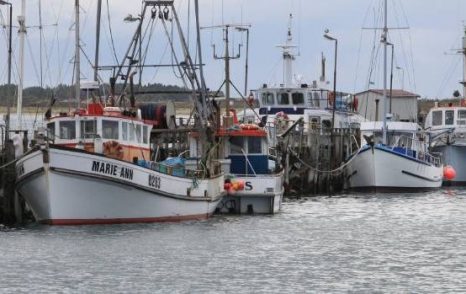
New Zealand: MPI agree to meet Southland fishermen over electronic monitoring regulations
Ministry for Primary Industries staff have agreed to front up to Southland fishermen who have questions about new monitoring and reporting regulations. From October 6, new measures will be rolled in to ensure that all commercial fishing boats are fitted with both GPS equipment and cameras, to improve monitoring of catch levels and to help prevent any illegal activity. More than 100 fishermen, from throughout Southland, met at the Ascot Park Hotel in Invercargill last week to discuss the implications of the ministry’s new Integrated Electronic Monitoring and Reporting System (IEMRS). Many in the commercial fishing industry were frustrated at the fact the new rules had been decided on without proper consultation or thought to their consequences. click here to read the story 09:43

Letter: Government fishing vessel monitoring plans are demanding rubbish
I see Nathan Guy is claiming the new electronic system for monitoring fishing vessels is the biggest change since the introduction of the commercial fishing quota system. I believe he has no knowledge of the history of his portfolio. Instead of writing paper reports we will do them electronically. Whoopee. Someone needs to tell him that this is being done in some form or another on most boats, along with AIS tracking on most company boats, although MPI probably doesn’t have access to a lot of it. It is only the smaller boats, that have the least impact, that don’t – as most can’t afford it. We already work under the most onerous system in New Zealand and probably the world. The extra detail being included is ridiculous and in some cases unworkable on a small boat. click here to read the letter 15:39

New Hampshire fleet dwindles as at-sea monitoring decision heads to Supreme Court
A New Hampshire fisherman leading the fight against a decision by the National Oceanic and Atmospheric Association to shift the cost of at-sea monitoring to industry has appealed the case to the U.S. Supreme Court. David Goethel of Hampton, New Hampshire, said he filed the appeal in early July. He is challenging the decision of a federal district court and the 1st U.S. Circuit Court of Appeals, which ruled in NOAA’s favor, according to the Associated Press. Goethal, who filed his original suit in December 2015, has been joined in his appeal by the Northeast Fishery Sector 13, which represents fishermen from Massachusetts to North Carolina. His legal support is being provided pro bono by the Cause for Action Institute.,, In Goethel’s appeal to the Supreme Court, he argues that NOAA’s requirement of at-sea monitors represents an illegal, warrantless search of private property, and that forcing the industry to pay for its own monitoring represents a violation of the Constitution’s Commerce Clause. click here to read the story 10:51

Wind farm officials hear fishermen’s pleas, Deepwater Now Exploring New Cable Route
In response to strong opposition from commercial fishermen who fear a disruption of their work and destruction of fish habitat, officials of Deepwater Wind, a Rhode Island company that plans to construct a 15-turbine wind farm approximately 30 miles off Montauk, are exploring an alternative to an initial plan to route the installation’s transmission cable through Gardiner’s Bay. At an April meeting of the East Hampton Town Trustees, several fishermen voiced those concerns to Clint Plummer, Deepwater Wind’s vice president of development, should the transmission cable be laid to make landfall in Gardiner’s Bay. click here to read the story 20:25
Oversight Hearing “Exploring the Successes and Challenges of the Magnuson-Stevens Act” Wednesday, July 19, 2017 2:00 PM
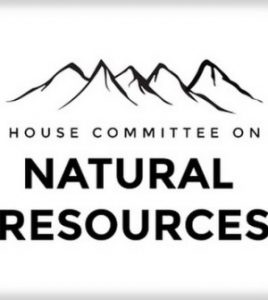 On Wednesday, July 19, 2017, at 2:00 p.m., in Room 1324 Longworth House Office Building, the Subcommittee on Water, Power and Oceans will hold an oversight hearing titled “Exploring the Successes and Challenges of the Magnuson-Stevens Act.” Witnesses are Mr. Jeff Kaelin, Government Relations, Lund’s Fisheries, Inc. Cape May, New Jersey. Mr. Sean Martin, President, Hawaii Longline Association, Honolulu, Hawaii. Mr. Nick Wiley, Executive Director, Florida Fish and Wildlife Conservation Commission, Tallahassee, Florida. Mr. Charles Witek, Recreational Angler and Outdoor Writer, West Babylon, New York. click here at 14:00 Wednesday to watch the proceeding. If you need further information, please contact Calvin Frauenfelder, Clerk, Subcommittee on Water, Power and Oceans at (202) 225-8331.
On Wednesday, July 19, 2017, at 2:00 p.m., in Room 1324 Longworth House Office Building, the Subcommittee on Water, Power and Oceans will hold an oversight hearing titled “Exploring the Successes and Challenges of the Magnuson-Stevens Act.” Witnesses are Mr. Jeff Kaelin, Government Relations, Lund’s Fisheries, Inc. Cape May, New Jersey. Mr. Sean Martin, President, Hawaii Longline Association, Honolulu, Hawaii. Mr. Nick Wiley, Executive Director, Florida Fish and Wildlife Conservation Commission, Tallahassee, Florida. Mr. Charles Witek, Recreational Angler and Outdoor Writer, West Babylon, New York. click here at 14:00 Wednesday to watch the proceeding. If you need further information, please contact Calvin Frauenfelder, Clerk, Subcommittee on Water, Power and Oceans at (202) 225-8331.
Hearing Memorandum details, click here 19:35

Electronic Monitoring – New fishing regulations bring opposition in Southland
Some southern fishermen say new government regulations for commercial fishing boats could be put small operators out of business. From October 6, new measures will be rolled in to ensure that all commercial fishing boats are fitted with both GPS equipment and cameras, to improve monitoring of catch levels and to help prevent any illegal activity. Primary Industries Minister Nathan Guy said the changes would protect the sustainability of New Zealand’s fisheries, and “give us arguably the most transparent and accountable commercial fishery anywhere in the world”. However, some southern fishermen fear the new rules could also bring about a range of negative consequences. As well as the costs incurred from buying and maintaining the new equipment, it could also inadvertently reveal many fishermen’s jealously guarded marks (fishing spots). click here to read the story 15:59
Fishing groups say lobster fishery would be better off with industry-led by-catch monitoring system as opposed to something DFO imposes
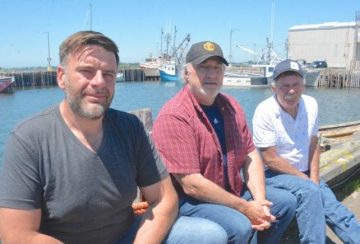 If the reality is that it’s coming anyway, three local fisheries organizations say fishermen and industry would be better off to handle it themselves as opposed to having it handed down by DFO. Such is the case with a proposal that could see by-catch monitoring happen in the lobster fishery by the fall of 2018. Three local organizations – Coldwater Lobster Association, the Maritime Fishermen’s Union and the Bay of Fundy Inshore Fisheries Association – have joined efforts to get the message out that industry is willing to develop a monitoring system that would be better for the fishery in terms of cost and time.,,, Another proposal being thrown around is cameras on fishing boats. These three associations are all strongly opposed to such a Big Brother approach, saying not only would it be extremely expensive, but it would not generate any useful scientific data. click here to read the story 11:16
If the reality is that it’s coming anyway, three local fisheries organizations say fishermen and industry would be better off to handle it themselves as opposed to having it handed down by DFO. Such is the case with a proposal that could see by-catch monitoring happen in the lobster fishery by the fall of 2018. Three local organizations – Coldwater Lobster Association, the Maritime Fishermen’s Union and the Bay of Fundy Inshore Fisheries Association – have joined efforts to get the message out that industry is willing to develop a monitoring system that would be better for the fishery in terms of cost and time.,,, Another proposal being thrown around is cameras on fishing boats. These three associations are all strongly opposed to such a Big Brother approach, saying not only would it be extremely expensive, but it would not generate any useful scientific data. click here to read the story 11:16







